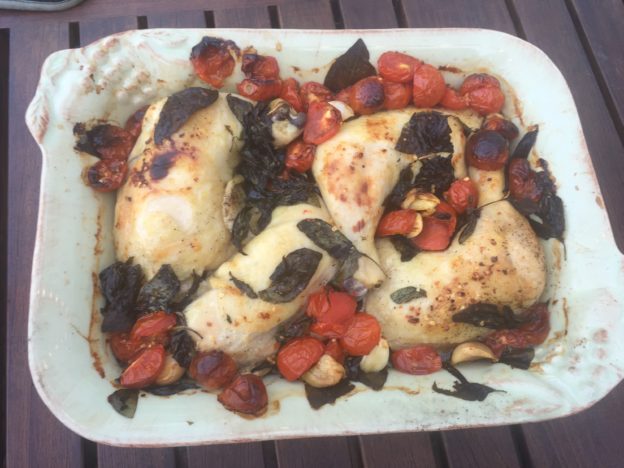How did I make it through life this far without ever canning? Why did I start now? Two fine questions. My two fine answers are fresh figs and fresh corn. They’re only around for a bit and they are so darned good.
Let’s start with figs. This recipe come from Treas, out in Cali, head chef at Granite Chief Command Central. Her recipe, which she shared with me after two years of my passive yet unremitting coersion, says that fig season is only in August. This handy guide to all things fig, gives us a larger window. According to google, there is a short season in early summer and then a longer season in late summer/fall. Either way, fresh figs are not around forever, and once you buy them you’ve got to use them fast. We should have a few more weeks at least, and cognac is always in season, so we’re good there.
A little heads up to you non-canners out there. You need a big pot, you need to know that when you fill it too full with water and then put your jars in, your stove may have a hazardous overflow situation. You can only use canning lids once, which is why that whole mysterious section of parts in the grocery store exists. I guess that’s about it. I was going to get into racks for the bottom of your pot, but this recipe doesn’t call for one, so let’s run with the “ignorance is bliss” theory.
Another small cautionary note: When you are heading out to book group for three hours it’s best to turn the burner under your boiling fig jam OFF. Next up? Corn relish to give Stonewall Kitchen a run for their money…and a new stockpot.
Drunken Fig Jam
Recipe and action shots from Treas Manning
Makes 6 1/2 pint jars
Ingredients
• 2 lemons
• 4 pounds ripe fresh figs (preferably black), stemmed,
cut into 1/2-inch pieces (use food scale for accuracy)
• 4 cups sugar
• 3/4 cup brandy or Cognac
• 1/2 teaspoon coarse kosher salt
Method:
Using a vegetable peeler, slice peel from lemons (try to avoid as much as the white part as possible) in long strips. Cut peel into matchstick-size strips. Combine lemon peel, figs, sugar, brandy, and 1/2 teaspoon coarse salt in heavy large deep saucepan; let stand at room temperature 1 hour, stirring occasionally.
Bring fig mixture to a boil over medium-high heat, stirring until sugar dissolves. Reduce heat to medium; continue to boil until jam thickens (30 to 35 minutes), and is reduced to 6 cups, stirring frequently and occasionally use a hand blender to puree the mixture. It’s fine if there are small bits of lemon peel and fig, but I do like the bits to be minimal. Remove from heat.
Ladle mixture into 6 hot clean 1/2-pint glass canning jars, leaving 1/4-inch space at top of jars. Remove any air bubbles. Wipe jar threads and rims with clean damp cloth. Cover with hot lids; apply screw bands. Process jars in pot of boiling water 10 minutes. Cool jars completely. Store in cool dark place up to 1 year.
Notes: At high altitude over 5500 feet, process the jars for 15 minutes.
Drunken Fig Jam is yummy:
- on a toasted baguette with a slice of melted Irish Cheddar, and a walnut on top.
- on crusty bread with fresh burratta or mozzarella
- on a grilled bone in pork chop, or on slices of pork tenderloin
- on whole wheat toast topped with a strip of bacon for breakfast.
- with cheese, sliced pears and walnuts on a groovy pizza
Bringing It and Giving It:
Makes a darned nice Christmas gift, especially canned in a Ball and Mason squatty wide mouth jar


























